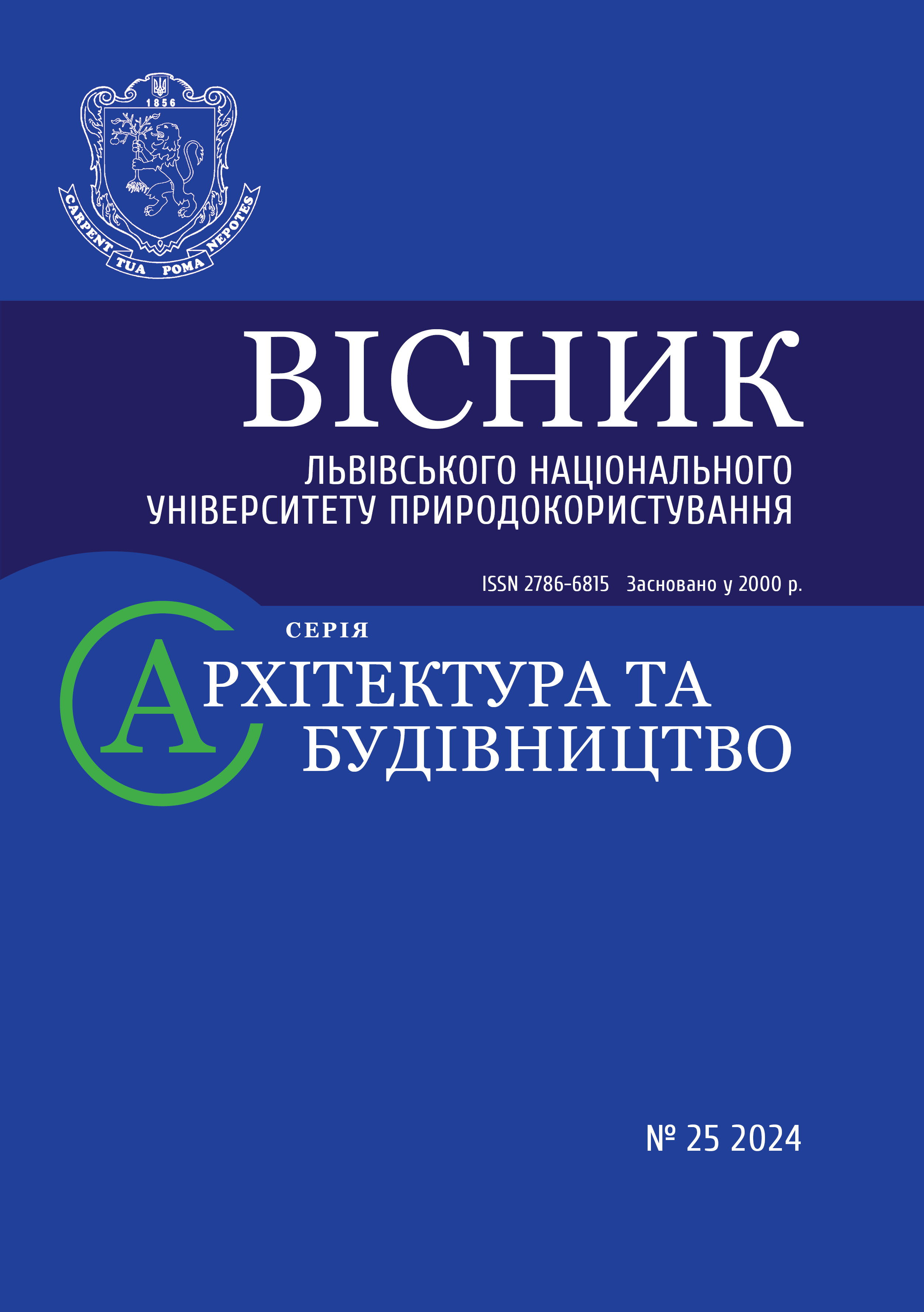INVESTIGATION OF THE STRESS-STRAIN STATE OF CYLINDRICAL ELEMENTS OF ENGINEERING STRUCTURES UNDER THE TEMPERATURE INFLUENCES
DOI:
https://doi.org/10.31734/architecture2024.25.016Keywords:
concrete, strength, temperature distribution, temperature stress, deformation, fire resistanceAbstract
The active development of monolithic frame construction in recent times necessitates a new approach to calculating the elements of building structures. Concrete columns are one of the most critical components of these buildings, and any compromise in their strength can pose significant risks. When it comes to fire conditions, the primary destructive factor affecting the structure is temperature and its gradient. The extent of heating in structures and the size of the temperature gradient through their thickness is influenced by various factors, including the temperature of combustion products, heat exchange conditions between the surface of the structure and the external environment, the thermophysical characteristics of the materials used, and the duration of heating. To accurately assess the load-bearing capacity and integrity of concrete columns, it is essential to consider the thermal stress state caused by temperature changes and the magnitude of the temperature gradient. Temperature-induced stresses in structures can be analyzed separately from mechanical stresses. This is because, due to the linearity of the equations of thermoelasticity, the total stress values are obtained by combining both temperature and mechanical stresses. The study focused on the non-stationary temperature field in cylindrical concrete columns, specifically during sudden cooling over time. In modeling the column cooling process, boundary conditions of the second kind were taken into account. Analytical expressions for examining the temperature field were derived using the Laplace transformation. The findings showed that the stress-strain state of the column is influenced by this non-stationary temperature field. Results from the research were presented graphically. An analysis was conducted on how temperature stresses vary across the column's thickness in relation to the thermophysical and mechanical properties of concrete. Graphical representations of radial, tangential, and axial stresses based on the radius and the temperature field's impact on concrete columns were produced.
Radial stresses in concrete columns are consistently compressive at all points, becoming zero at the outer surface. The maximum radial stress values are found at the center of the column and tend to increase over time.
In contrast, axial and tangential temperature stresses reach their maximum absolute values at the outer surface of the column, where they act in tension. This tension can lead to cracks or other forms of damage on the outer surface of the column.
References
Dominik A., Baitala V., Semerak M., Chernetskyi V. Fire resistance of a cylindrical column under fire conditions. Fire safety. 2013. No 23. P. 76–80.
Hlova B., Hlova T., Petruchenko O., Tereshchuk O. Research of the stress-deformed state of hollow cylindrical elements of special purpose engineering structures under the temperature influence. Bulletin of Lviv National Environmental University. Series Architecture and Construction. 2023. No 24. P. 36–44.
Hlova T., Kovalchuk R., Kuznitska B. Research of the stress-strain state of cylindrical elements of engineering constructions of special purpose under the effect of temperature. Military technical collection. Lviv: NASV. 2019. No 20. P. 3–8.
Lykov А. V. Theory of the thermal conductivity. M.: Vyshcha shkola, 1967. 600 p.
Semerak M., Nekora O., Kharyshyn D. Stress-strain state of steel tube confined concrete pillars under the thermal power influence of fire. Fire Safety. 2017. No 31 P. 115–124.
Semerak М., Kharyshyn D. Influence of physical and mechanical properties of metal and concrete on thermal stress of steel tube confined concrete pillars during heating. Bulletin of Lviv State University of Life Safety. 2018. No 15. P. 165–172.
Tymoshenko S. P., J. Guder. Theory of elasticity. M.: Science, 1975. 576 p.


